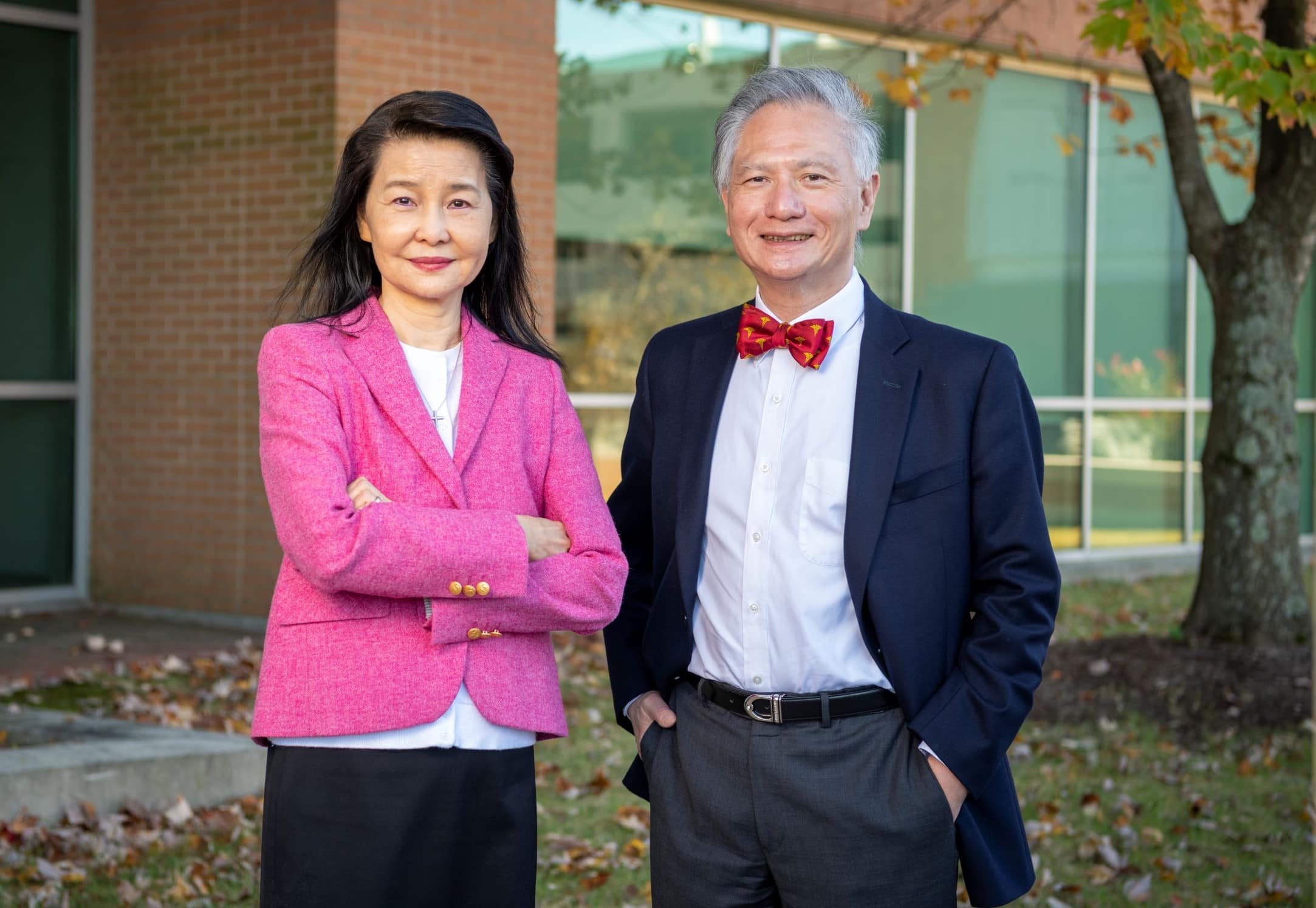View Larger Image

UAMS' Hui-Ming Chang, M.D., and Edward T.H. Yeh, M.D., have led the research behind a discovery of a possible way to control immune responses.
Image by Bryan Clifton
UAMS Researchers Discover Potential Way to Control Immune Responses
| LITTLE ROCK — Researchers at the University of Arkansas for Medical Sciences (UAMS) have discovered how a key switch in the body’s immune response is turned on and off, opening the door to new treatments for those with life-threatening, uncontrolled immune responses.
The findings by Edward T.H. Yeh, M.D., and Hui-Ming Chang, M.D., MPH, were published Nov. 17 in the Proceedings of the National Academy of Sciences.
“The immune response is critical for survival by defending against bacteria, virus and other infectious agents,” said Yeh, a professor and chair of the College of Medicine Department of Internal Medicine and the Nolan Family Distinguished Chair. “However, failure to control an over-activated immune response could spell trouble as evidenced by severe COVID-19 infections.”
Chang is a professor in the college’s Department of Pharmacology and Toxicology and Department of Internal Medicine. The UAMS professors were joined in the research by Feng-Ming Yang, Ph.D., who carried out most of the work when he was a post-doctoral fellow with Chang and Yeh. Yang is now an assistant professor at the College of Medicine, Taipei Medical University in Taiwan.
Yeh said the discovery stems from years of research that builds on the team’s previous findings about the molecular mechanisms that control immune responses.
In a 2017 publication in the Journal of Clinical Investigation, the team described its discovery of a key switch for the immune system that resides in cells. This switch is composed of two proteins, TNF receptor-associated factor 6 (TRAF6) and another protein known as sNASP. When the immune system is activated by infection, a phosphate group is added to sNASP to turn the switch on. In their latest publication, the team reveals their discovery of protein phosphatase 4 as a key to turn the switch off by removing the phosphate from sNASP.
The discovery will allow the team to explore possible new drugs now that they have a target.
“By identifying the specific on-off switch mechanisms, we can begin to look at ways to modify or interrupt the proteins involved,” Yeh said. “We want to design drugs or chemicals that can help people regulate their immune systems when medically necessary.”
UAMS is the state’s only health sciences university, with colleges of Medicine, Nursing, Pharmacy, Health Professions and Public Health; a graduate school; a hospital; a main campus in Little Rock; a Northwest Arkansas regional campus in Fayetteville; a statewide network of regional campuses; and eight institutes: the Winthrop P. Rockefeller Cancer Institute, Jackson T. Stephens Spine & Neurosciences Institute, Harvey & Bernice Jones Eye Institute, Psychiatric Research Institute, Donald W. Reynolds Institute on Aging, Translational Research Institute, Institute for Digital Health & Innovation and the Institute for Community Health Innovation. UAMS includes UAMS Health, a statewide health system that encompasses all of UAMS’ clinical enterprise. UAMS is the only adult Level 1 trauma center in the state. UAMS has 3,485 students, 915 medical residents and fellows, and seven dental residents. It is the state’s largest public employer with more than 11,000 employees, including 1,200 physicians who provide care to patients at UAMS, its regional campuses, Arkansas Children’s, the VA Medical Center and Baptist Health. Visit www.uams.edu or uamshealth.com. Find us on Facebook, X (formerly Twitter), YouTube or Instagram.###